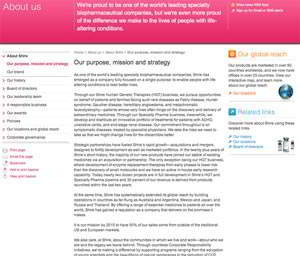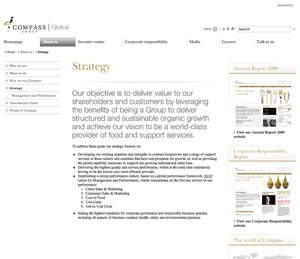In terms of financial theory, investors buy stock in a company on the expectation that future cash flows from the company will be enough to repay the investment and pay a return over a foreseeable time horizon. In order to do this, investors must have some visibility into the potential for future profits. This is where the job of investor relations comes in. Clarifying how the company will meet challenges going forward to pay out returns to shareholders is a three-fold task:
- making sure people clearly understand the company, its products and markets
- laying down a vision for how the company’s strategy will move the enterprise forward in the future
- and giving them a transparent view into how the company’s profits were garnered in the past.
One can argue on the relative importance of each of these messages. In fact, it’s a bit like a three-legged stool in that each element is essential to the overall investment story. Without an understanding of how a firm will make its profits in the future an investor will not be likely to ante up his money. Similarly, if the organization, its products and markets are not understood, an investor will have little confidence in the enterprise. Finally, if an investor cannot look at past performance of the enterprise as a gauge to how they will perform in the future, conviction that management will deliver for the investor will be lacking.
Today, however, I want to focus on the forward-looking piece of the story, as this is probably the area that we see the least in investor web sites. Most web sites are good at giving you information about past performance, particularly financial performance. Relatively fewer give you a glimpse into where they want the company to go.
One company that does is Shire Pharmaceuticals. While no single page description on the web can purport to give a full discussion of a company’s strategy, Shire’s page (see above), does give the reader some essential basics, such as their focus on specialty biopharmaceuticals and their use of strategic partnerships to develop most of the drugs in their pipeline.
Another example is the Compass Group’s Strategy page. Although there is a fair amount of corporate-speak jargon (Who doesn’t want to deliver value to shareholders and customers; and what do they mean by “leveraging the benefits of being a Group”?), there are some useful pieces of information about what Compass wants to do and how they propose to do it once you get past the fuzzy language.
To summarize, a company’s message will be much more effective if they devote more space and effort on their web sites to telling investors where they want the company to go in the future and how they intend to get there.
In this series:
Previous post: Making the individual shareholder feel welcome
Next post: Help your most frequent visitors
Lucy is Editor at Corporate Eye





I’m not sure that investors from either the buy side or sell side want to get strategy updates from the company website. Most of these guys prefer to talk face to face or by phone. Also, placing your entire strategy on the web seems like too much information.